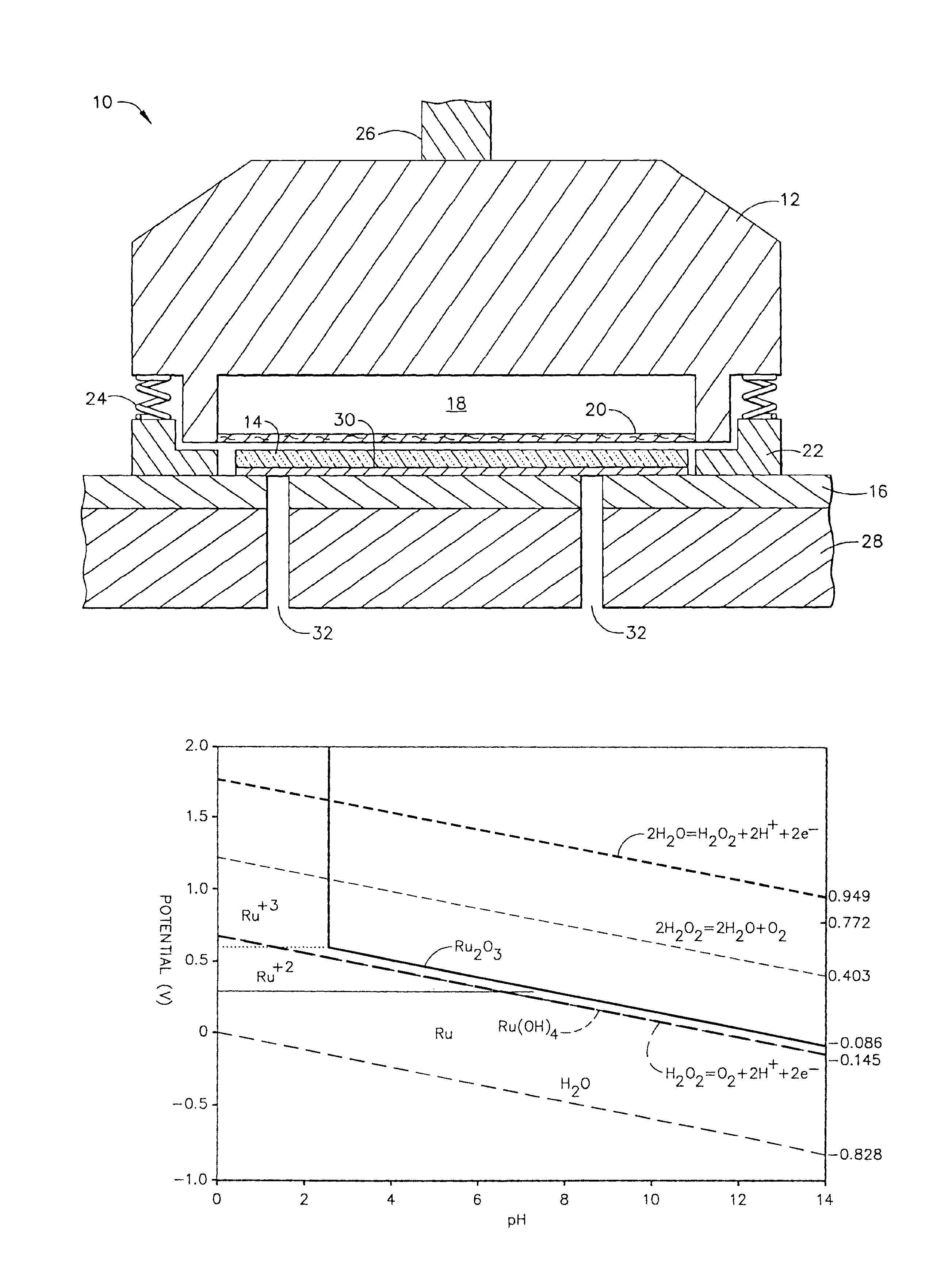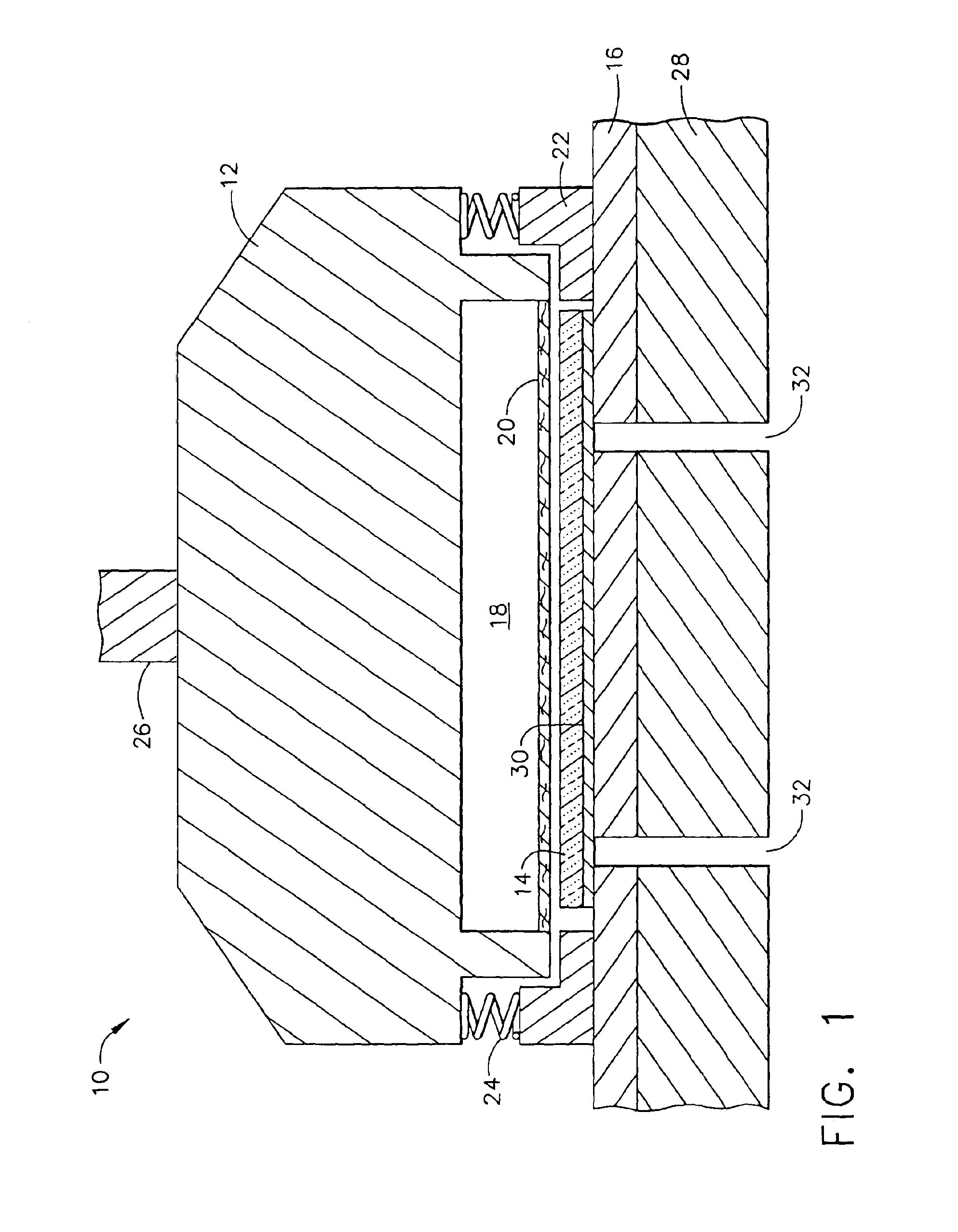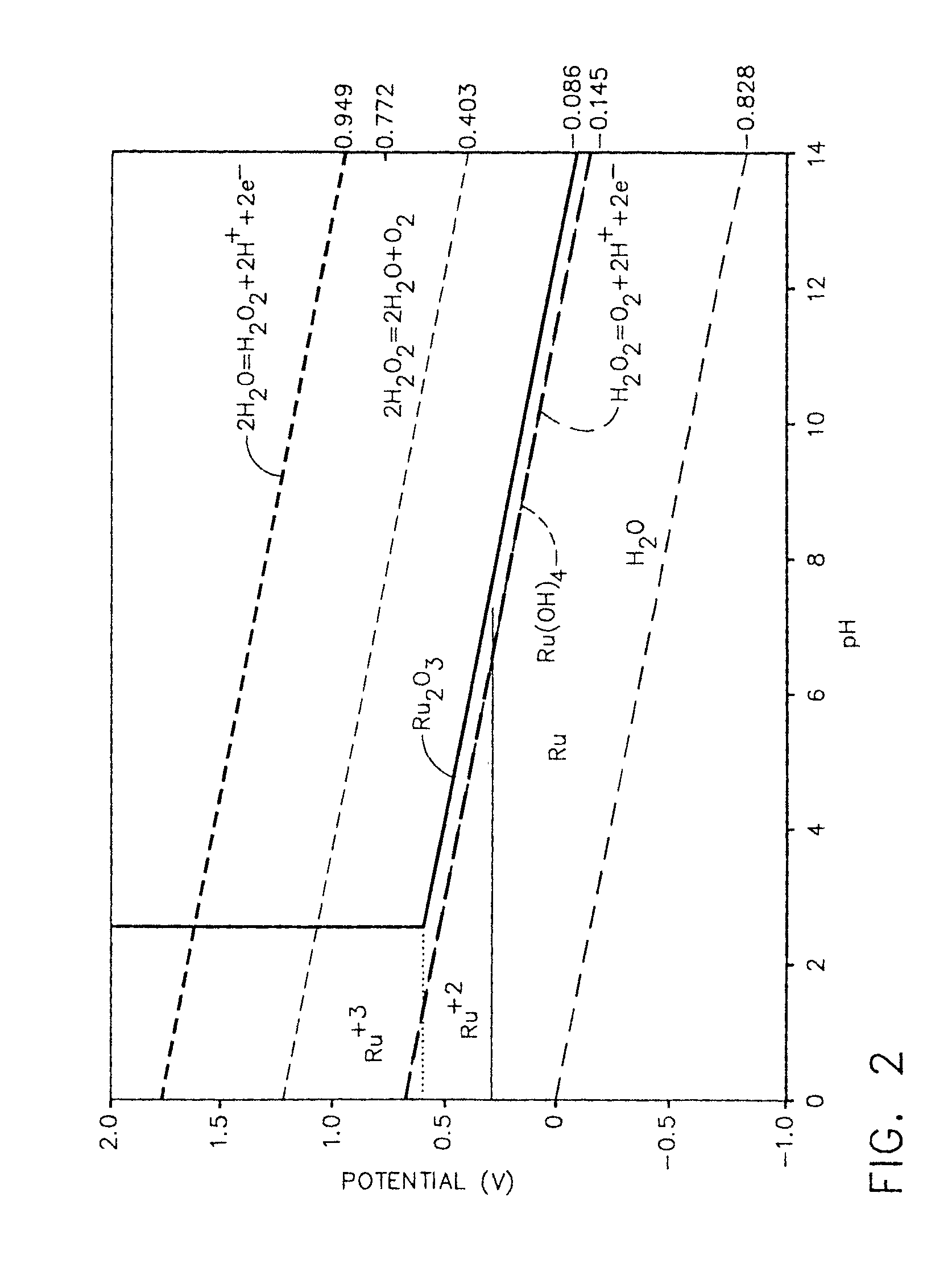Methods and compositions for chemical mechanical planarization of ruthenium
a technology of chemical mechanical polishing and compositions, applied in the direction of polishing compositions, other chemical processes, lapping machines, etc., can solve the problems of difficult to effectively deposit copper on thin barrier layers of ta/tan, difficult to fill high-aspect ratio features with copper, and difficult to patterned etching of copper
- Summary
- Abstract
- Description
- Claims
- Application Information
AI Technical Summary
Problems solved by technology
Method used
Image
Examples
example 1
[0026]The following example demonstrates the effectiveness of the various embodiments of the planarizing composition and the method of chemical mechanical planarization of the present invention on the removal of ruthenium from a semiconductor wafer using low contact pressures. This example should not be construed as in any way limiting the scope of the present invention.
[0027]Each of the semiconductor wafers tested comprised 400 angstroms of ruthenium deposited over a titanium nitride insulative layer on a silicon dioxide substrate. The wafers were subjected to CMP using a Momentum CMP apparatus from Novellus Systems, Inc. while exposed to a planarization composition. Each of the planarizing compositions used comprised a water dispersion medium and 30 wt. % of silica abrasives having a hardness of 6.5 and a particle size of 50 nm. The platen and polishing pad of the CMP apparatus were moved orbitally at speeds of 600 rpm, with a flow of the planarization composition at the polishing...
example 2
[0029]The following example demonstrates the effect of the hardness and size of the abrasive particles of the planarizing composition of the present invention when a low contact pressure is used. Each of the semiconductor wafers tested comprised 400 angstroms of ruthenium deposited over a titanium nitride insulative layer on a silicon dioxide substrate. The wafers were subjected to CMP using a Momentum CMP apparatus from Novellus Systems, Inc. while exposed to a planarization composition. Each of the planarizing compositions comprised a water dispersion medium. The platen and polishing pad of the CMP apparatus were moved orbitally at speeds of 600 rpm, with a flow of the planarization composition at the polishing pad of 175 ml / min. An IC 1000 polishing pad available from Rodel, Inc. was used in the CMP apparatus. The wafers were rotated at velocities in the range of 2-50 rpm and the CMP time for each wafer was 60 seconds. The removal rate of the ruthenium was calculated from the dif...
PUM
| Property | Measurement | Unit |
|---|---|---|
| particle size | aaaaa | aaaaa |
| contact pressure | aaaaa | aaaaa |
| dielectric constant | aaaaa | aaaaa |
Abstract
Description
Claims
Application Information
 Login to View More
Login to View More - R&D
- Intellectual Property
- Life Sciences
- Materials
- Tech Scout
- Unparalleled Data Quality
- Higher Quality Content
- 60% Fewer Hallucinations
Browse by: Latest US Patents, China's latest patents, Technical Efficacy Thesaurus, Application Domain, Technology Topic, Popular Technical Reports.
© 2025 PatSnap. All rights reserved.Legal|Privacy policy|Modern Slavery Act Transparency Statement|Sitemap|About US| Contact US: help@patsnap.com



